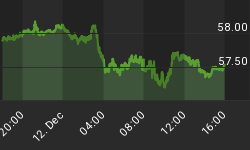The experts - no, not Alan Greenspan and Robert Rubin, but the CBO - tell us that we cannot grow our way out of the long-term federal budget deficit, but the acceleration in real and nominal economic growth the U.S. economy has experienced in the past two quarters is helping to reduce the deficit in the short-term. When growth picks up, corporate profits and household income do too. Thus, tax revenues pick up, or at least do not contract as much. When growth picks up, the rate of increase in unemployment insurance benefits, food stamp expenditures and Medicaid expenditures slow down, not to mention government capital injections into teetering financial institutions. The chart below shows that in the 12 months ended March 2010, cumulative federal outlays grew by 3.9% vs. March 2009 - the slowest growth in outlays since October 2007's 2.7% and down considerably from July 2009's 19.2%. The rate of contraction in revenues is slowing. In the 12 months ended March 2010, cumulative federal revenues contracted by 12.6% vs. March 2009 - an "improvement" over November 2009's contraction of 17.6%. To reiterate, we will not be able to "grow" our way out of our long-term federal deficit/spending challenges, but it is important to appreciate that some of the recent surge in federal government spending and the federal deficit was due to the cyclical impact of the deepest and longest recession since the 1930s.
Chart 1
















